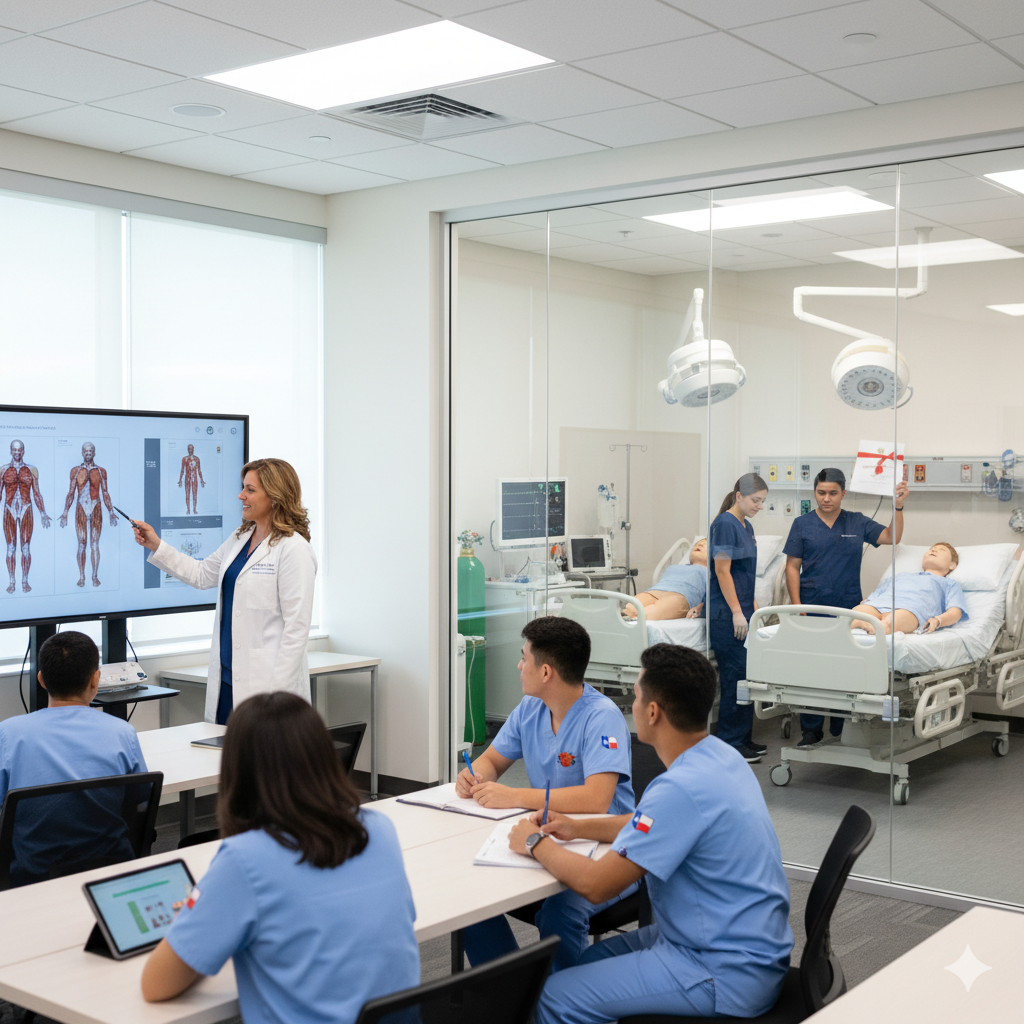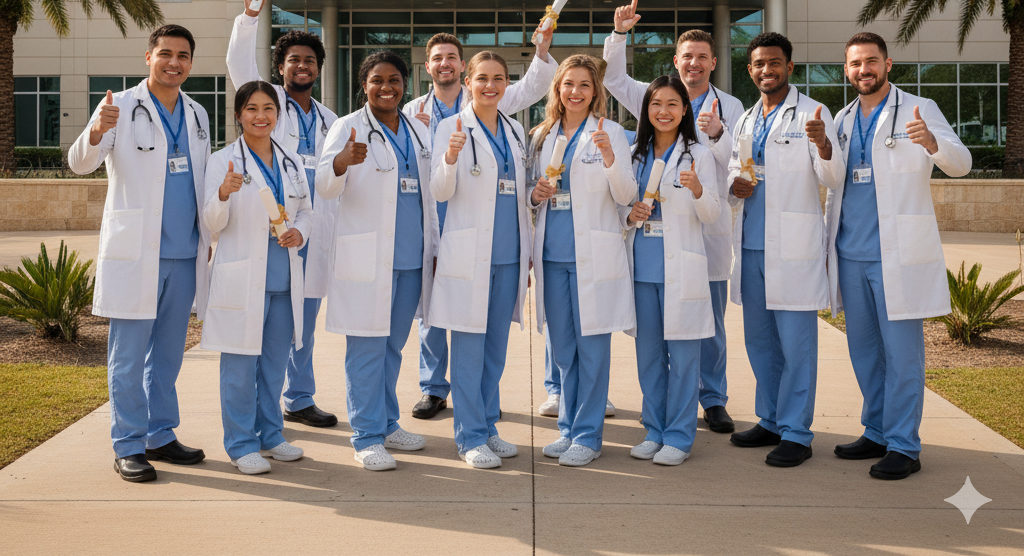If you’re planning a career in healthcare but aren’t sure where to start, you’ve probably come across two popular entry-level options: the Medical Assistant (MA) course and the Patient Care Technician (PCT) course. Both careers play vital roles in healthcare teams, offer rewarding opportunities to help patients, and can be completed in a relatively short time compared to nursing or medical school.
But which one is right for you? At Solomon’s Healthcare Academy (SHA) in Texas, we train students in both fields, and we know choosing between them can feel overwhelming. In this blog, we’ll break down the differences, similarities, job responsibilities, and career prospects of Medical Assistants and Patient Care Technicians—so you can make the choice that best fits your future.
What Does a Medical Assistant Do?
Medical Assistants are often described as the “multi-taskers” of healthcare. They balance both clinical and administrative duties, making them valuable in outpatient clinics, physician’s offices, and specialty practices.
Typical responsibilities include:
Recording patient histories and vital signs
Preparing patients for exams
Assisting physicians during procedures
Administering injections and medications (under supervision)
Performing EKGs, basic lab tests, and specimen collection
Scheduling appointments and managing medical records
Coordinating insurance billing and paperwork
If you enjoy variety in your workday, interacting with patients, and handling both medical and office tasks, becoming a Medical Assistant may be the right path.
What Does a Patient Care Technician Do?
Patient Care Technicians focus more heavily on direct patient care. They often work in hospitals, nursing homes, or long-term care facilities, providing essential bedside support.
Typical responsibilities include:
Assisting patients with daily living activities (bathing, dressing, mobility)
Monitoring and recording vital signs
Performing EKGs and drawing blood (phlebotomy)
Assisting nurses and doctors during treatments
Providing emotional support to patients and families
Maintaining a safe and clean patient environment
If you’re someone who finds fulfillment in hands-on patient care, being a Patient Care Technician may be the more rewarding career option.
Training and Certification: MA vs. PCT
At SHA, both programs are designed to prepare students for real-world healthcare settings, but the curriculum differs.
Medical Assistant Course: Typically takes 9–12 months. Students learn both clinical and administrative skills. Graduates are eligible for CMA (Certified Medical Assistant) or similar credentials depending on the chosen exam.
Patient Care Technician Course: Usually completed in 6–9 months. Focuses primarily on clinical and bedside care. Graduates often pursue certifications such as CPCT (Certified Patient Care Technician) and may also earn phlebotomy and EKG certifications along the way.
Where Can You Work?
Medical Assistants: Most often in outpatient settings like primary care offices, specialty clinics (cardiology, dermatology, pediatrics), and urgent care centers.
Patient Care Technicians: Commonly in hospitals, dialysis centers, nursing homes, and rehabilitation facilities where 24/7 patient support is needed.
Salary and Career Outlook
According to the U.S. Bureau of Labor Statistics:
Medical Assistants earn a median annual salary of around $39,000–$41,000. Demand for MAs is expected to grow much faster than average due to the rise of outpatient care.
Patient Care Technicians typically earn around $35,000–$38,000 annually. With aging populations and growing long-term care needs, the demand for PCTs continues to rise.
Both careers also provide stepping stones for advancement—whether you want to move into nursing, specialized healthcare, or management roles.
Which Course Should You Choose?
The decision comes down to your interests, strengths, and long-term goals:
Choose Medical Assistant if you want a balance of clinical and administrative work, enjoy multitasking, and prefer working in outpatient environments.
Choose Patient Care Technician if you’re passionate about bedside care, want to build strong patient connections, and are comfortable working in hospital or long-term care settings.
Why Train at Solomon’s Healthcare Academy?
At SHA, we understand that every student’s journey is unique. That’s why we offer:
Hands-on training with real-world medical equipment
Small class sizes for personalized support
Flexible schedules to fit your life
Certification preparation so you can start your career with confidence
Job placement assistance to help you find the right role after graduation
Final Thoughts
Both the Medical Assistant and Patient Care Technician courses open the door to fulfilling, stable, and growing careers in healthcare. The key is to choose the path that aligns best with your personality and professional aspirations.
If you’re still unsure which option suits you, reach out to us at Solomon’s Healthcare Academy, Texas. Our team is here to guide you in finding the perfect program for your goals.
📞 Contact us today and take your first step toward a rewarding career in healthcare!
Frequently Asked Questions
Both careers are in high demand, but Medical Assistants often have more opportunities in outpatient clinics and physician offices, while Patient Care Technicians are in demand in hospitals and long-term care facilities. Your growth depends on where you see yourself working in the future.
Yes. Both MA and PCT courses can serve as stepping stones to nursing. Many students use the experience and certifications they gain as a foundation to pursue Licensed Vocational Nurse (LVN) or Registered Nurse (RN) programs later.
The Medical Assistant course usually takes 9–12 months, while the Patient Care Technician course can be completed in 6–9 months, depending on your chosen schedule. SHA also offers flexible class timings to fit your lifestyle.
If your goal is to spend more time providing bedside care and supporting patients daily, the Patient Care Technician course is a better fit. If you prefer a mix of patient interaction and administrative duties, the Medical Assistant course is ideal.




